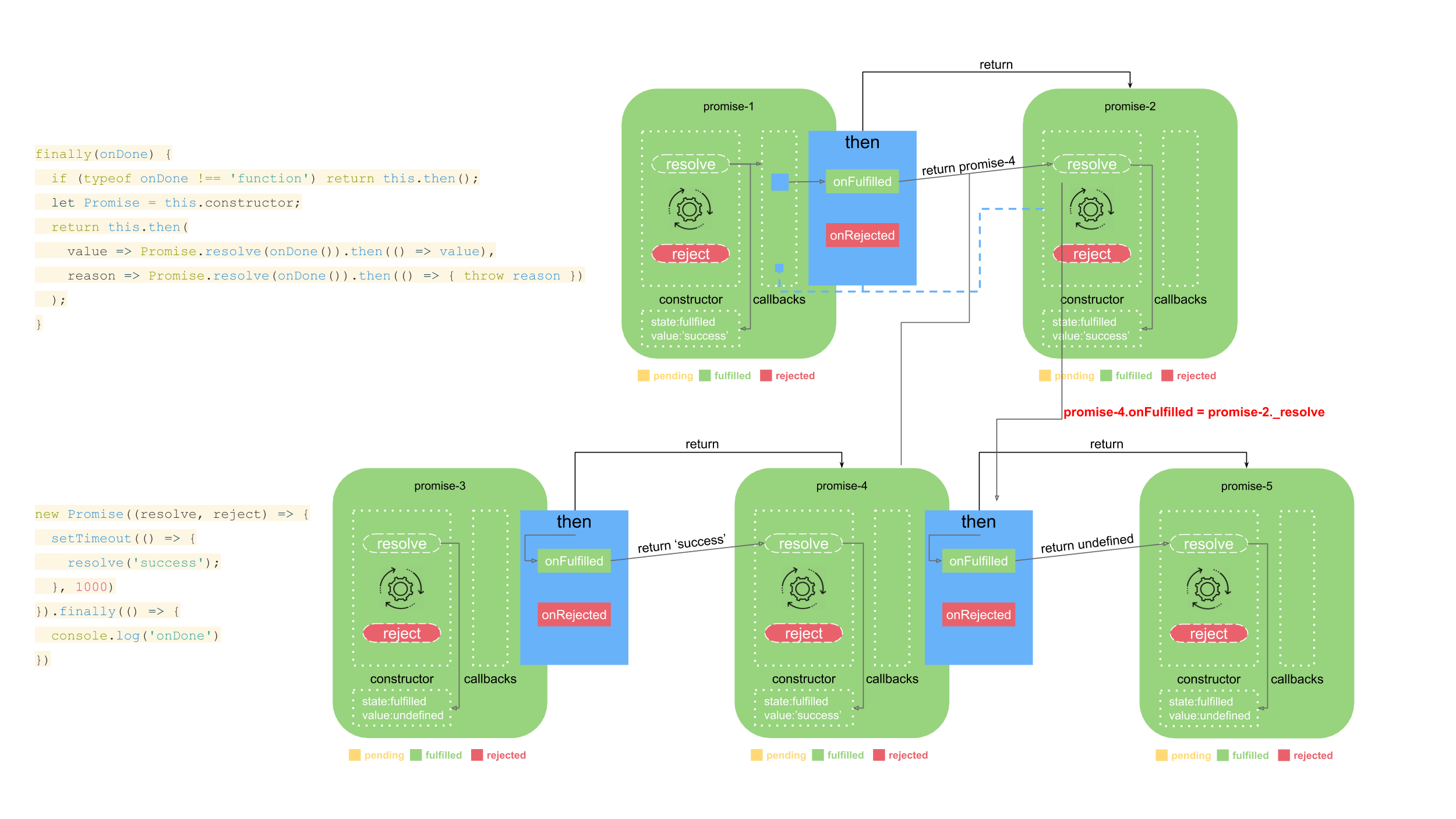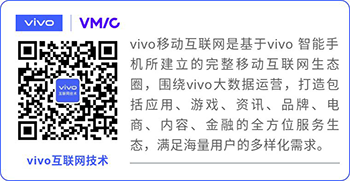本文首发于 vivo互联网技术 微信公众号
链接: https://mp.weixin.qq.com/s/u8wuBwLpczkWCHx9TDt4Nw
作者:Morrain
Promise 是异步编程的一种解决方案,它由社区最早提出和实现,ES6 将其写进了语言标准,统一了用法,原生提供了Promise对象。更多关于 Promise 的介绍请参考阮一峰老师的 ES6入门 之 Promise 对象。
很多同学在学习 Promise 时,知其然却不知其所以然,对其中的用法理解不了。本系列文章由浅入深逐步实现 Promise,并结合流程图、实例以及动画进行演示,达到深刻理解 Promise 用法的目的。
本系列文章有如下几个章节组成:
-
图解 Promise 实现原理(三)—— Promise 原型方法实现
-
图解 Promise 实现原理(四)—— Promise 静态方法实现
一、【前言】
上一节中,实现了 Promise 的链式调用。链式调用是 Promise 的难点,更是重点。截至目前,Promise 的实现如下:
本节主要介绍 Promise 原型方法的实现,包括 catch、finally 以及 rejected 状态等的实现。
二、【错误处理】
之前为了讲解原理,只是实现了 onFulfilled ,对于 Promise 来说,除了成功还有失败,在失败时,要标记 Promise 的状态为 rejected, 并执行注册的 onRejected。如下Demo所示:
有了之前处理 fulfilled 状态的经验,支持错误处理变得很容易,只需要在注册回调、处理状态变更上都要加入新的 reject 逻辑。
运行结果如下:
三、【异常处理】
刚刚介绍了错误处理,是指在 Promise 的构造函数中发现的错误,并通过 reject 通知的。如果在执行 onFulfilled 或者 onRejected 时,出现了异常,该如何处理呢?对于这类异常,处理也很简单,可以使用 try-catch 捕获错误,然后将相应的 Promise 状态设置为 rejected 状态。改造_handle方法如下:
不管是错误也好,异常也罢,最终都是通过 reject 实现的,可见最终对于错误以及异常的处理,都可以通过 then 中的 onRejected 来处理。所以单独增加一个 catch 方法,它是 .then(null, onRejected) 的别名。如下:
四、【Finally方法】
在实际应用的时候,我们很容易会碰到这样的场景,不管 Promise 最后的状态如何,都要执行某些操作(onDone)。例如服务器使用 Promise 处理请求,然后使用finally方法关掉服务器:
本质上,因为它是 then 的一种变形。上面的 demo 的效果等价于如下的代码:
通过上面的分析,finally看上去可以这么实现:
但是由于 finally 方法的 onDone 不关心 Promise 的状态到底是 fulfilled 还是 rejected ,所以onDone 里的操作,应该是与状态无关的,并且不应该有任何参数。
如果使用 then 来实现就不符合 Promise 规范中关于《Why not .then(f, f)?》的说明 。一来 onDone 有参数,二来当 onDone 返回一个Promise时,会改变 finally 返回的Promise的值 状态 。
根据规范,finally实现如下:
对于上面的示例,执行结果如下:
同样可以通过示意动画来还原这个过程:
finally 的实现看起来简单,实际理解还是比较困难,对于上面的实例,中间其实有5个 Promise实例生成。如下图所示:

原型方法就介绍这么多,下一节介绍两个静态方法
更多内容敬请关注 vivo 互联网技术 微信公众号

注:转载文章请先与微信号:Labs2020 联系。